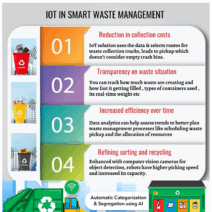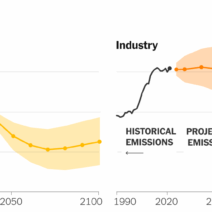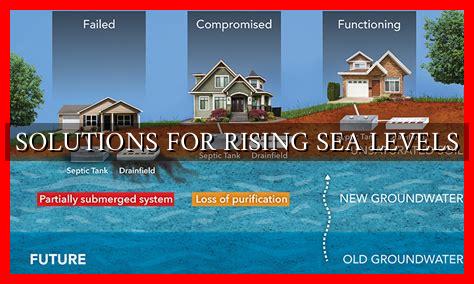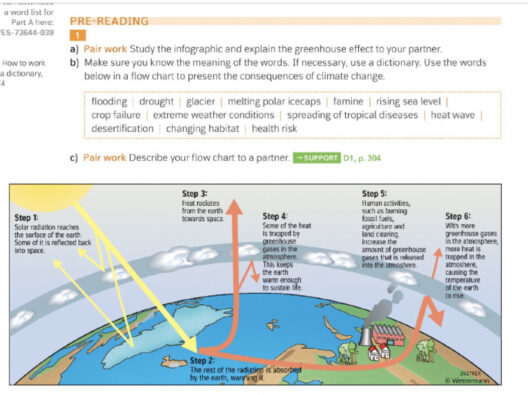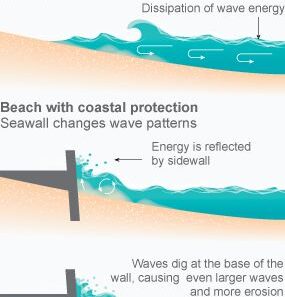Rising sea levels are no longer a distant concern; they are a contemporary reality, exacerbated by climate change and the melting of polar ice caps. As communities worldwide brace for the impacts of encroaching oceans, it is imperative to explore viable adaptation strategies that can mitigate risks, protect livelihoods, and enhance resilience. The following sections elucidate concrete steps communities can take to adapt to rising sea levels.
Understanding the Threat of Rising Sea Levels
Rising sea levels pose multifaceted threats, including increased flooding, erosion of shorelines, and saltwater intrusion into freshwater resources. These challenges are particularly acute for coastal communities where a significant portion of the population resides. Elevating awareness about the scientific underpinnings of sea-level rise is vital. Factors such as thermal expansion of seawater and melting glaciers contribute to this phenomenon, leading to estimates that global sea levels could rise by 1 to 2 meters by the end of the century.
Communities need to recognize that inaction can lead to economic decline, displacement, and loss of biodiversity. By fostering an understanding of the urgency behind these challenges, local populations can galvanize support for adaptive measures.
Comprehensive Urban Planning and Infrastructure Enhancement
To combat the adversities of rising seas, communities should prioritize resilient urban planning. This entails the careful analysis of geographical vulnerabilities and the implementation of smart growth principles that prioritize sustainability. Comprehensive land-use planning can dictate how developments occur in coastal regions, steering new constructions away from high-risk flood zones.
In conjunction with planning, enhancing infrastructure is critical. Invest in building and retrofitting seawalls, levees, and storm surge barriers designed to withstand higher tidal flows and extreme weather events. Such enhancements will not only protect existing structures but can also serve as a catalyst for long-term economic stability, as businesses and residents gain confidence in their safety.
Moreover, promoting the concept of “living shorelines” can be an ecologically sound approach. By utilizing natural elements, such as mangroves, wetlands, and reefs, communities can create buffers against storm surges while enhancing biodiversity.
Innovative Water Management Strategies
As sea levels rise, managing freshwater resources becomes increasingly complex. Adaptation measures should prioritize innovative water management strategies that ensure the availability of potable water despite the intrusion of salty ocean water.
Implementing desalination technologies can provide a reliable alternative for communities that face dwindling freshwater supplies. While desalination poses its own environmental concerns, when strategically applied, it can supplement local water resources. Furthermore, investing in rainwater harvesting systems can serve as a decentralized solution, capturing and storing rainwater for use during dry spells.
Communities should also consider the restoration of aquifers and coastal marshes, which act as natural filters for water while simultaneously providing habitats for wildlife. This dual benefit enhances both human resource management and ecological balance, fostering a sense of stewardship among residents.
Community Engagement and Education
One cannot underestimate the power of community engagement in addressing adaptation strategies. Grassroots initiatives that mobilize local populations create a sense of ownership over these adaptation measures. Engaging citizens through educational programs can raise awareness about the implications of climate change and the actions they can take individually and collectively.
Forming community-led organizations to assess vulnerability and develop localized response plans fosters collaboration and capacity building. Regular workshops can inform citizens about best practices in energy conservation, sustainable agriculture, and coastal ecosystem preservation. Involving younger generations ensures that awareness and advocacy for climate resilience continue to thrive.
Policy Advocacy and Funding Opportunities
Success in implementing practical solutions often hinges on adequate funding and sound policymaking. Communities must prioritize advocacy efforts directed at securing government support for resilience-building projects. Federal and state funding programs aimed at climate adaptation can provide essential resources for local initiatives.
Forming coalitions with neighboring communities can amplify voices and enhance lobbying power to ensure that critical funding remains a priority on political agendas. Additionally, communities can explore grant opportunities from environmental organizations committed to supporting innovative climate adaptation projects.
To maximize the efficacy of adaptation strategies, integrating climate resilience into broader socioeconomic policies is essential. Ensuring alignment between economic development plans and environmental stewardship can lead to holistic community growth, reinforcing the interconnectedness of human activity and health of the planet.
The Path Forward: A Collective Responsibility
Ultimately, adapting to rising sea levels is not merely about survival; it’s about thriving in the face of adversity. Communities must embrace an ethos of collective responsibility, understanding that local actions can resonate on a global scale. By adopting innovative solutions, fostering community connections, and advocating for pragmatic policies, societies can chart a course towards resilient futures amidst rising oceans.
It is not too late to act, but the time to begin is now.
